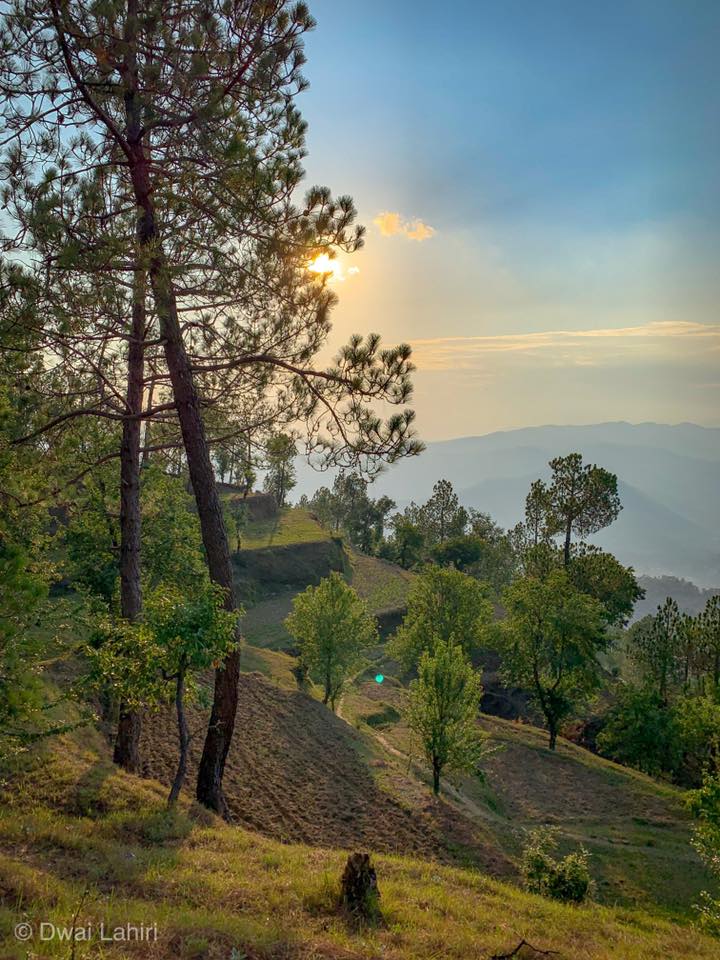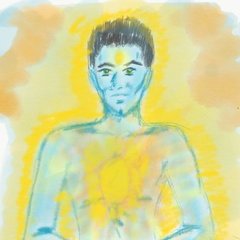-
Content count
8,286 -
Joined
-
Last visited
-
Days Won
70
Everything posted by dwai
-
The most complete view of the mechanics of creation are in two systems - Samkhya and Saivism. If you read the Shiva Sutras - The Supreme Awakening by Swami Lakshmanjoo you will find a wonderful discourse on creation and manifestation. That however doesn't mean Vedas don't have them. It is all there in the Upanishads too. Only reason why most people don't know this is because the primary upanishads don't deal with cosmology. They deal with liberation. 99% of people who write about this topic haven't read the Upanishads properly
-
http://www.swamij.com/pdf/Panchadashi9580164.pdf
-
Okay BTW Swami Vidyaranya is not from the RK order. https://en.wikipedia.org/wiki/Vidyaranya He is however considered an enlightened master in the Advaita Vedanta tradition....
-
It happens with this method too. There is a natural falling away of effort and a natural and spontaneous residing in “bliss”. It’s hard to articulate but it’s a constant presence that one is as the mind fluctuates and flutters about. Along with the presence is a sense of completeness. Not sure about Buddhas’ essences etc, but this way ( as practiced by jonesboy and jeff et al) in my humble experience and opinion is a genuine practice. I do think that it needs to be complemented by an “abiding in presence mindfully” type practice. For instance, one student I was working with I showed first how to abide in the “I AM” for several months and then when I introduced this practice (merging), he was able to quickly go into oneness awareness.
-
That which merges is the mind. There is still apparent separation of one mind from another (in perception of the neophyte especially). And there are degrees of conscious cognition of the apparent separation (or lack thereof). It is like lighting a flame from an existing fire. There are two different approaches as I've seen. One is to abide in pure awareness being (I AM) and let the universe literally melt away. The other is to expand the mind beyond the limitations of the body-mind into infinite conscious awareness. I think both are valid paths and are mutually complementary. The former helps realize the emptiness of the limited self (or uncover the Self). The latter helps actively realize the Oneness of all appearances.
-
Got this from prof. google -- https://www.lamayeshe.com/article/chapter/chapter-19-what-guru-yoga-excerpt In Advaita Vedanta tradition, we say "The Guru is none other than the Self"
-
if i may interject -- what jonesboy is saying is verifiable experientially. There is deep stillness, clarity etc that are realized with merges with deities. But I also agree with 3Bob when he says that all of these are still manifestations of the One without a second - the Nondual (Call it Self, Siva, etc etc). think of the "Universe" as a hologram but there are different layers of the hologram these layers exist in multiple frequencies where humans normally operate is at a very low frequency but being that non dual awareness, there is access to all frequencies the way to access the higher frequencies is by dropping the limitations that are self-imposed, as "I Am body, I am mind" so when you drop the limitations you have access to higher frequencies so different layers of this hologram What I understand from merging is an expansion of the mind of the apparent individual seeker by merging with the mind of another apparent being that exists at a higher frequency realm (or has uninhibited access to all the layers up to a certain layer). So, it is a very real and practical thing -- merging.
-
you mean asana names are not sufficient? Read shandilya Upanishad, it has a list of asanas named. Yoga sutras by patanjali has too. The kriya yoga tradition has a bunch. Not as many as practiced today, but hatha Yoga as it is practiced today was created by Krishnamacharya. I practiced Tamil siddhar yoga, which is from the siddha tradition (Nath sampradaya). We had 10-15 asanas only. Real stuff was in pranayama and meditation. But the asanas were used nonetheless.
-
What are you talking about? Go read up about Kalari Payyat and Silambam and the yoga postures included in them. The problem with finding “written” records in India is that until recently (less than 1000 years) the transmission was done orally. Another issue is with dating these documents reliably because the entire premise of dating Indian texts is horribly messed up by 18th and 19th century indologists such as Max Mueller. They subscribed to the biblical creation date of ~ 4000 BCE as the start of the universe, which threw all intelligent dating efforts off completely. Krishnamacharya has been quoted as having cited HAthayoga Pradipika, Yoga Koruntha, Patanjali’s yoga sutras as his primary source. Theosophical society is a joke. Their texts are a joke. No serious scholar of Yoga would take these as authoritative sources. There are specific Yoga Upanishads that people don't know about. A few of these are (not in any chronological order) -- * Shandilya Upanishad * Yogatattva Upanishad * VarAha Upanishad * Yogakundalini Upanishad These all contain Hatha Yogic concepts, Asanas, Pranayama, Kundalini, Chakras, etc etc.
-
Being tired of ignorance is a great thing. Now we can work on dispelling it.
-
I’m translating the Sanskrit word “Vasana” as bondage. Literally it means “Tendency” or even “addiction”. What are these? Deha Vasana - Bondage of the body. This is tied to the misidentification with the body. The body and the gross senses rule supreme and everything is done to ensure a regular “fix”. This is easy to understand and easiest to let go of. For example, addiction to pleasure producing things and activities (such as sex, food, etc etc). Loka Vasana - bondage of the world. This has to do with identities and labels and the value ascribed to them. If one attaches to the label of “upper middle class” human being. One will do anything to at least maintain that “stature”, no matter how much trouble they would have to endure, how many heads they would have to trample in order to do so. It has to do with our perceived place in this world and what we do to uphold those imaginary identities. This is a harder (and more subtle) addiction to get rid of. Shastra Vasana - bondage of scripture. This is when one is so enamored by scriptures and the intellectual prowess one requires to maintain “mastery” over the scriptures that they fail to see the truth behind the words (addicted to the messenger rather than the message). This is a very subtle addiction and the hardest to get rid of. One who succumbed to this will seldom realize it. They will be full of themselves and their “knowledge”.
-
I was just trying to point out for Atman there is no avidya, so Atman would never ask “who needs jnana?”. All asking and seeking and learning is purely from point of view of the limited identity/personality and yes you are right about jnana being used as that which dispels ignorance but also that which causes bondage. I think it’s a paradoxical statement that elicits a deeper inspection.
-
The one who needs to ask this question needs to know that while avidya (absence of jnana) is bad, attachment to jnana is worse.
-
It is generic and not meant for monks alone. What is the difference between a householder and a monk? Renunciation? True renunciation is in dropping attachment, not living in a monastery. What you call Racism is just genetic memory that is present in other creatures. Humans are somehow more immune to them and the distinction of "race" is a mythical concept. There is no inherent significant difference between a caucasian or an african or an east asian or a south asian. Genetic studies show that too. Therefore, racism, as in bigotry is a social trait that is acquired (sometimes over generations of bigoted concepts). They are mental concepts only. Interesting. Are you sure your mind is not interpreting these "reactions" based on the sounds you heard by picking "this is good, that is bad"? That is genetic memory and humans seem to be exempt from it. That is what Loka Vasana entails. Identities and what we do to protect them (including but not limited to projecting from past into the future). That is interesting. Would you be able to share some sources that support this theory? Agreed that people do slip up from time to time. But then again there are many who don't. We only see those who are involved in public scandals. This is based on what has been observed. The Ashtavakra Gita says very succinctly (quoting the Upanishads). One who is ignorant (without Jnana) of one's true nature is doomed to suffer in this world of appearances. One who has knowledge (jnana) is in an even more precarious position. It is related to the old point about needing a raft only as long as one has to cross the river. After crossing the river, one has to let go of the raft. Many people are unable to do so, and therefore struggle with "Buddhism vs Hindusim vs Daoism vs etc etc"... Intellectual ability is hugely aided by memory. All knowledge (not direct apperception) is essentially from the past. Memories. To apply any knowledge involves storage and retrieval of said memory.
-
This is a valuable document that is the translation of 30 minor upanishads. Now even though they are called "minor", they are priceless and a sincere seeker is well advised to get a copy (free) and read, contemplate and meditate on them. https://ia800303.us.archive.org/10/items/thirtyminorupani00xxxxuoft/thirtyminorupani00xxxxuoft.pdf
-
I"m not sure what role DNA has to play with dropping attachment to bodily identification. It is a "serious problem" with scholarly types. Never experienced it so don't know. Hatred towards a race, AFAIK is a learnt, nurtured thing and not due to nature. That is usually the case. There are many who rely purely on the words of the scripture and consider them final authority without verifying experientially (Direct Apperception). We can see that here on Daobums as well...page after page of obsessive quotes from this or that authoritative texts. My pleasure
-
This is the traditional view as far as I know It is meant to address a section of seekers who deal with scriptures, can quote stuff on demand, have very good intellectual understanding. But that is not the “Reality”.
-
The delivery mechanism of arts like FMA and taijiquan are similar. They are so alike that it becomes hard to discern one from the other without the “goods”. If one can deliver internal power then FMA gives practical aspect of delivering it. Imho taijiquan is not about methods and techniques. At its lowest level, It is about developing power and delivering power. Each of the 8 powers come out of two - Peng and lu. If one develops good peng and lu, then everything falls into place naturally. Taijiquan becomes Taiji Dao after that point. It is no longer about martial skill. It is about spiritual cultivation and transformation. I learnt karate, aikido and eventually taijiquan. Then my friend started showing me FMA. Every concept that I learnt in form and push hands in taijiquan I was able to apply in FMA context. Without knowing it. Taijiquan is sneaky that way...if we stay with it long enough it changes us in ways we aren’t even aware of. For instance, if you do the taiji sword form and some two person work , and then someone shows you FMA largo Mano, you might surprise yourself by just doing what is needed without even learning the rules of largo Mano. Or something like sinawali, which without the two sticks is empty hand work. You might be surprised to know how to apply taiji power to it naturally without even thinking. I’m sure others here have had similar experiences?
-
I'd recommend standing in basic wuji posture every day, starting with 3-5 minutes and building it up week to week by extra 5 minutes. So by the end of one month you should be able to stand for 20 minutes. In two months, 40 minutes or so. You don't need to do more than that. As you start doing the wuji posture, your energy will drop down to your lower abdomen (lower Dan tien) and start balancing out. It will help you relax and calm the mind. The following url has a good explanation and description of it. http://developyourenergy.net/zhang-zhuang-chi-kung/wu-chi-the-first-position/ Good luck. Best, Dwai
-
Depends on which "me" you are referring to. If by "me" you mean the personality that is the composite of memories and a body, then you are not that. If by "me" you mean that which is the "I AM" of you. Then you are just scratching the surface. If by "me" you mean that which the mind cannot know but is the source of the mind, then, you are that you. The Me that you really are, is where the memories (mind) appears. So yes. The me that you really are, is where body appears. So yes.
-
The oft-quoted lines from Lao Tzu "Five sounds dull the ear, five colors dull the eyes, five tastes dull the tongue" is not meant to make you give up music or see in grayscale only or eat only bland food, etc. It is a pointer to the fact that as long as one is oriented outward (sounds, sights, taste, smell, touch) they cannot discover the open-secret that resides within each of us. The De, which is covered by a personality (Ego) that is informed by sensory impulses. So instead of giving up music, food, etc, one should turn inward progressively until they can uncover their De. Once one has uncovered their De, they are are in effect in unfiltered touch with the Dao. To help understand this better, my teacher always told us this. Along with the "Five sounds dull the ear" etc, consider this - "What gives you the ability to hear? The ability to see?" and so on. The more we are focussed on the outward hearing, seeing, touching, etc, we are misdirected from the truth inside (ie what/who is behind the Eye that sees, the ears that hear and so on).
-
AFAIK he trained with a wandering Daoist monk. The style is how they trained in temples...
-
How apropos. I wrote this for a friend today --
-
Where’s the nonduality there?





